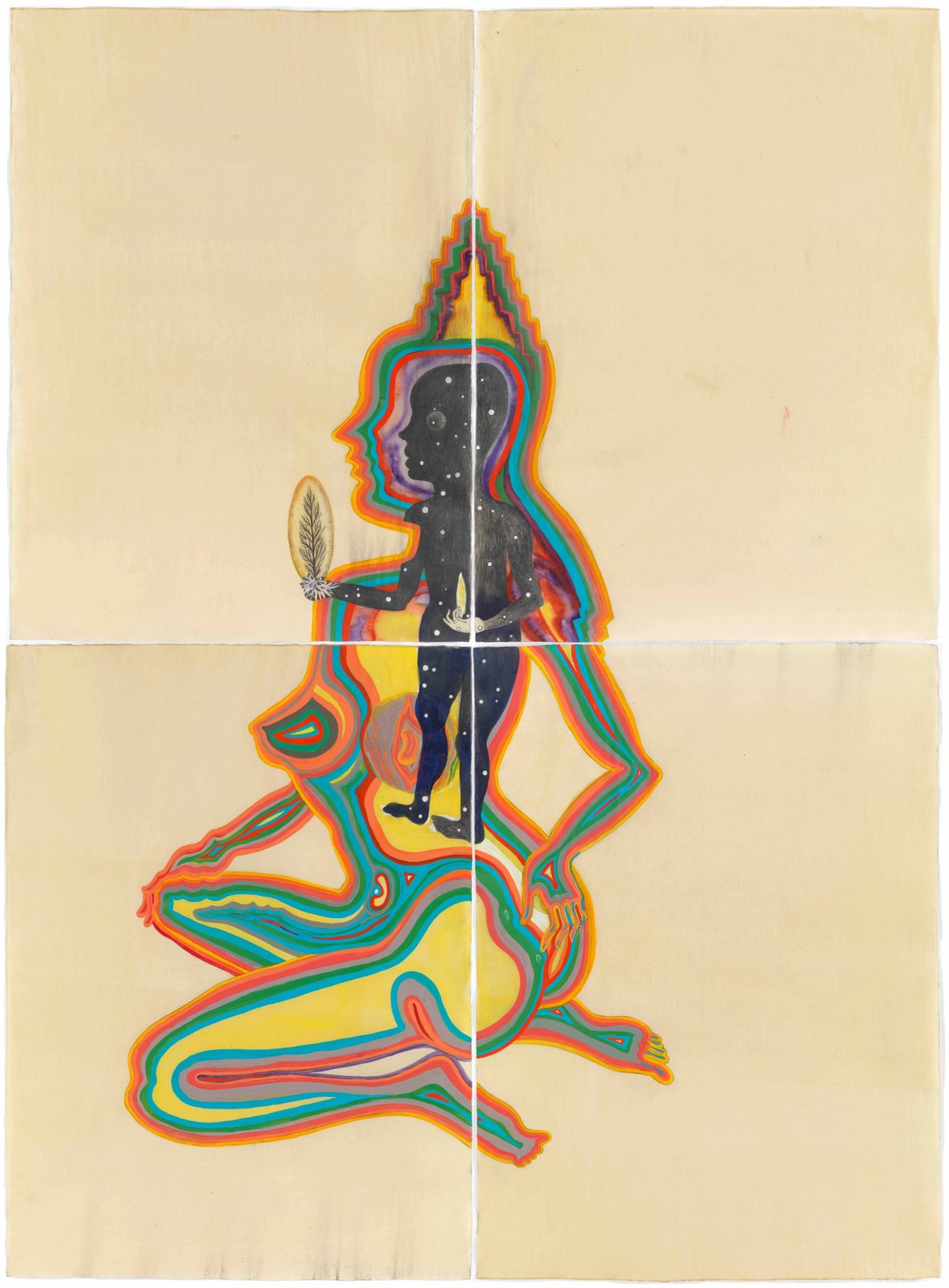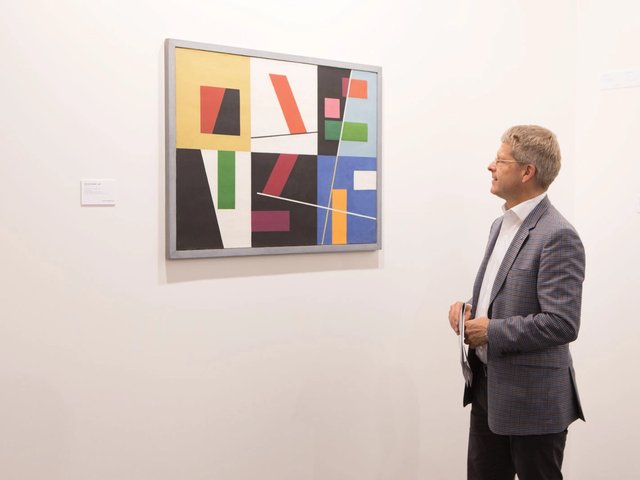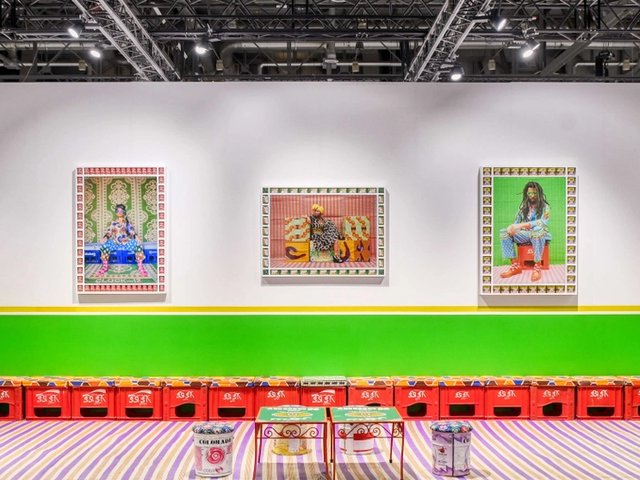Swiss collectors and galleries are making their presence felt alongside their French counterparts at the 11th edition of artgenève, the contemporary art fair running this week at Palexpo Geneva (until 29 January). At least ten dealers from Switzerland are taking part this year along with more than 15 French galleries based on locations where galleries run a venue (the fair organisers declined to give exact figures).
Antoine Reszler of the Lausanne-based Galerie Heinzer Reszler, says there are “more and more Swiss-German” collectors attending, highlighting also the large number of French galleries participating; he has sold a number of photography editions by the UK artist Simon Roberts (Shrouded Statue series, 2021, costing SFr4,200/£3,700).
Anna Helwing, the executive director of Galerie Haas Zürich, says that Geneva is especially known for its strong French-speaking collector base. “Events like Paris+ par Art Basel [which launched last year] might have a knock-on effect for us.” She has sold several works so far including four pieces priced between €4,000 and €25,000 by the Chilean Berlin-based artist Sandra Vásquez de la Horra, who participated in the 2022 Venice Biennale.
Asked whether the UK could learn lessons from Switzerland regarding trading outside the European Union, Helwing says: “As a non-EU member, Switzerland has always had its own role [in the international art market]. We’ve had to find our own way.”
According to the 2022 Art Basel and UBS Global Art Market Report, Switzerland had a 2% global art market share (by value) in 2021 compared to the UK’s 17% slice. Switzerland's economic and trade relations with the EU are mainly governed through a free trade agreement and through a series of bilateral agreements, according to the European Commission. Switzerland is outside the EU but is the bloc’s fourth biggest trading partner, its economy closely integrated with those of the 27 member states.
The Swiss artist and designer Philippe Cramer, who is showing his own products at the fair, describes the bureaucracy involved in operating outside the EU. “If I participate in fairs in Europe, even in France, I have to do so much paperwork,” he says, highlighting the red-tape issues still faced by Swiss dealers and artists.
His “phygital” works, combined digital and physical pieces—including a series of sculptures incorporating NFT digital elements (Apotropaic Amulets Sculpture series, 2022)—are a talking point at artgenève. “Some collectors who bought the NFT initially have since asked about creating a physical piece,” he says (those buyers will automatically receive the new sculptures).
Cramer is also showing a number of works available as augmented reality (AR) pieces which can be accessed by scanning a series of wall-mounted QR codes (edition of 12 costing SFr1,400/£1,200). Buyers will obtain the QR code wall piece along with the corresponding AR work.
The Swiss dealer Olivier Varenne, who also acts as the artistic director for collector David Walsh’s Museum of Old and New Art (MONA) space in Tasmania, recently opened a gallery in Geneva, the city where he was raised. He is now following in the footsteps of his father Daniel Varenne who also opened a gallery in the city.
“There are always people passing by, stopping, looking in the window. For me, with most of my clientele in Asia and the Emirates, this new proximity [to collectors in Geneva] creates local contacts… I wanted to create a commercial branch of the MONA, but in the end it didn't happen,” Varenne told our sister paper, The Art Newspaper France. At his artgenève stand, Varenne says he has “reserves on almost everything” including works by Christo. And what about Brexit? “Britain will find a way,” Varenne says.




